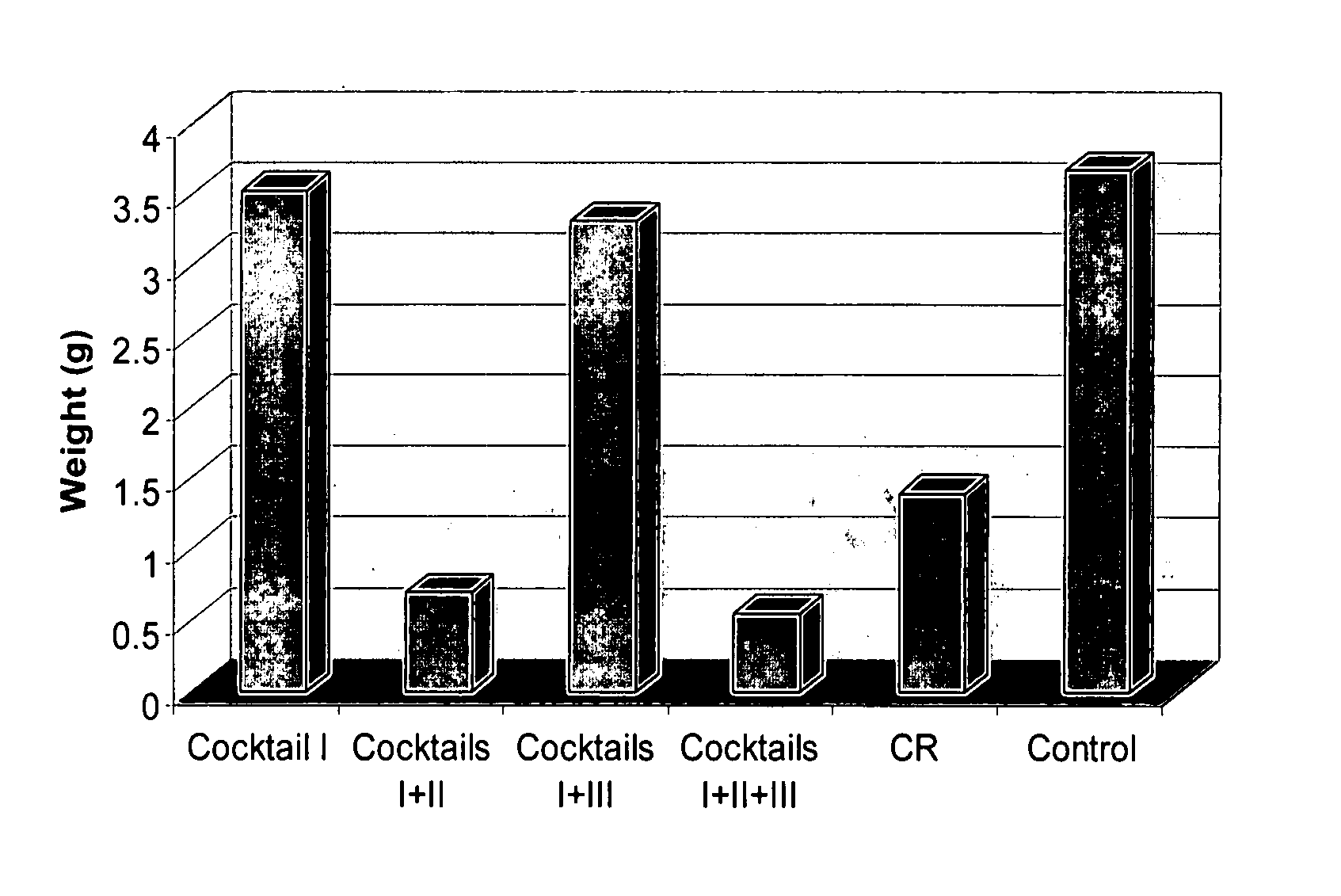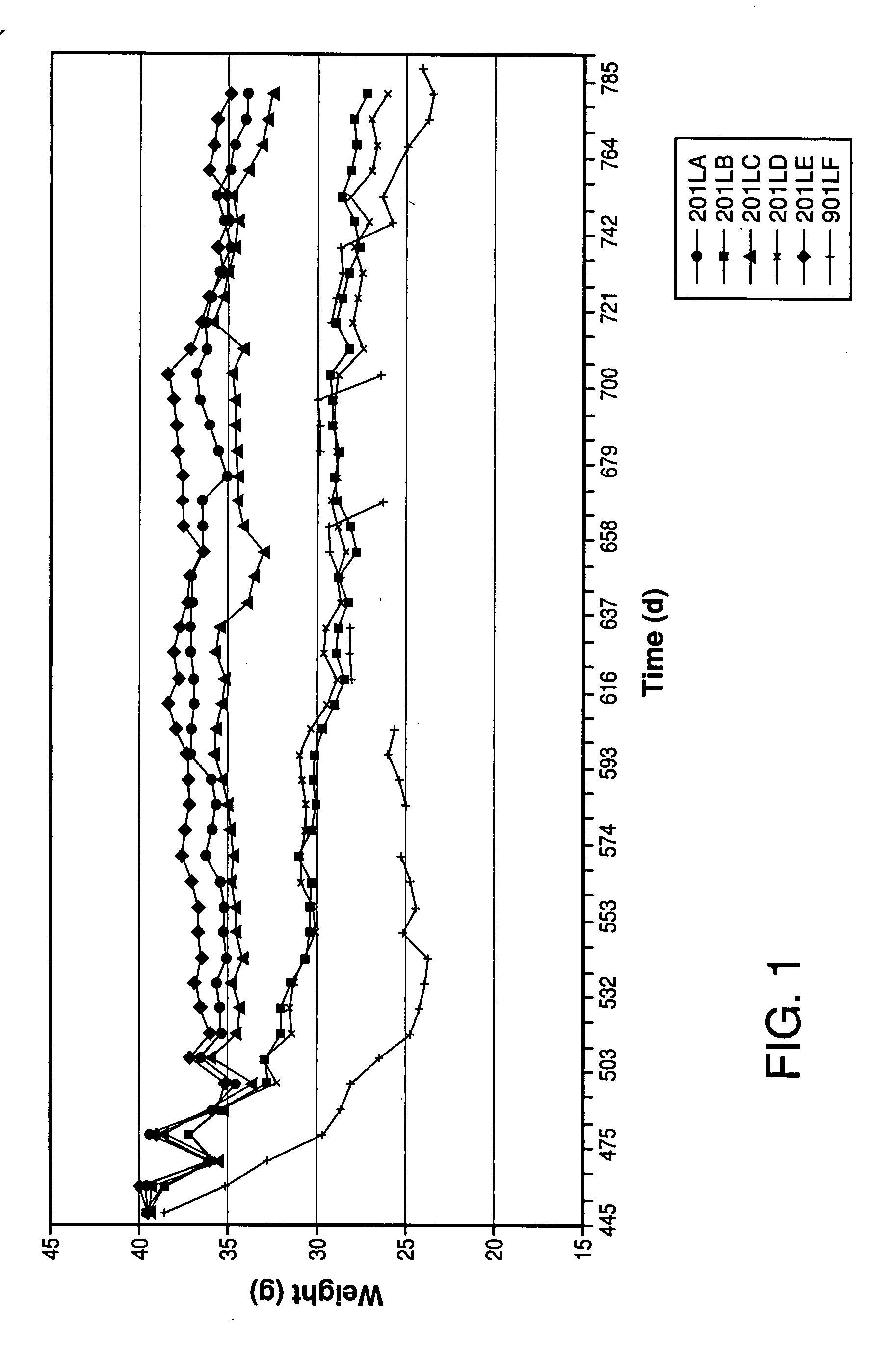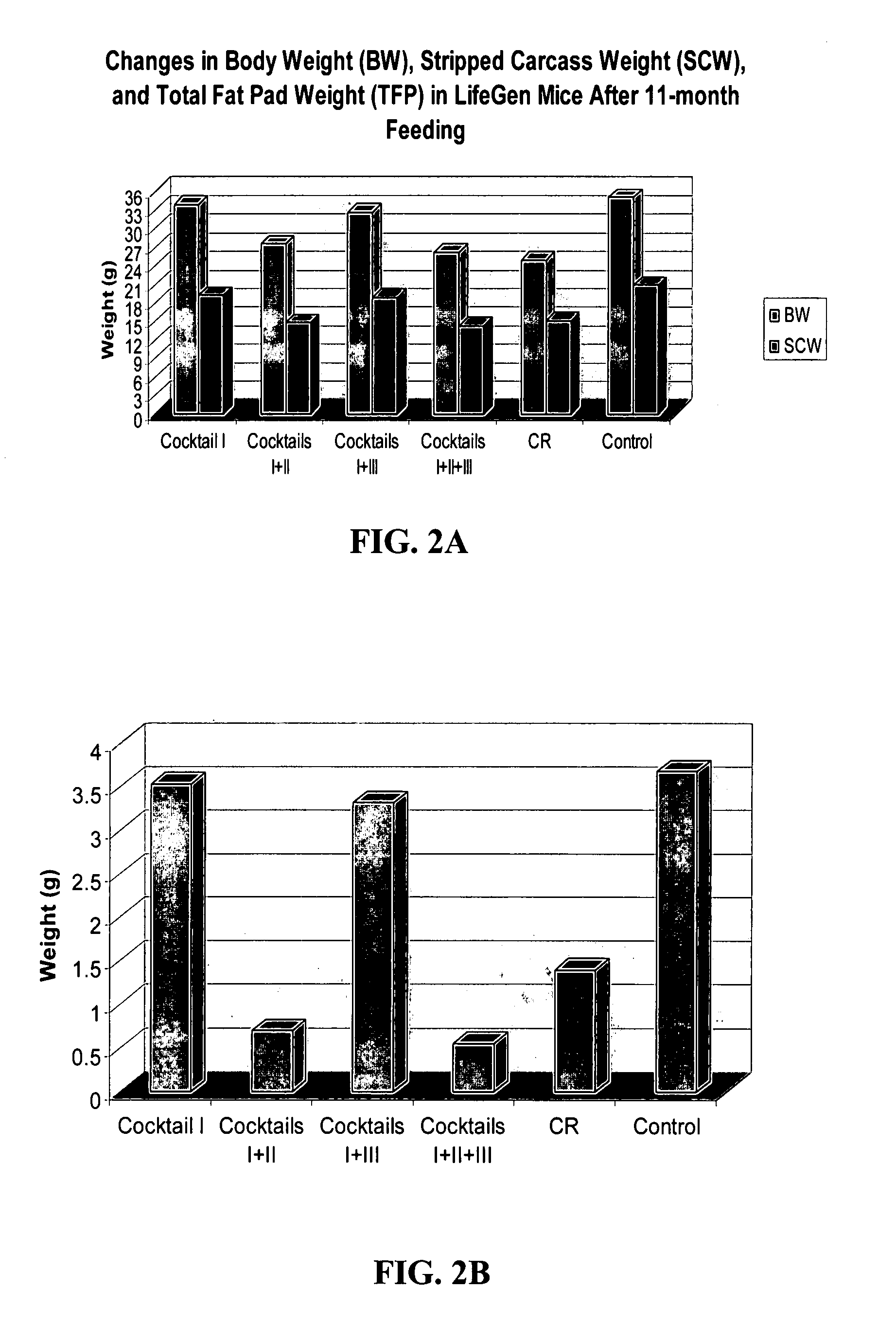Nutritional system and methods for increasing longevity
a nutrition system and longevity technology, applied in the field of nutrition support of health and longevity in animals, can solve the problem that cr is not a viable strategy for increasing longevity in most individuals, and achieve the effects of reducing body weight or body fat, improving longevity, and high insulin sensitivity
- Summary
- Abstract
- Description
- Claims
- Application Information
AI Technical Summary
Benefits of technology
Problems solved by technology
Method used
Image
Examples
example 1
[0090] The feeding protocol was eleven months in duration. Fifteen month-old mice [E57Bl / 6] were fed 24 g / wk[AIN-93M—American Institute of Nutrition (AIN) purifed diet formula for maintenance of mature rodents] (except for the calorie-restricted group as specified below, which were fed 18 g / wk for eleven months. Treatments consisted of supplementation to the basic feeding protocol with one or more of the following three cocktails:
[0091] Cocktail I:
CompoundDose (mg / kg diet)d-alpha tocopherol500Natural mixed carotenoids50Selenomethionine (39% selenium)0.2 seleniumAscorbic acid (vitamin C)450Lycopene50
[0092] Cocktail II:
CompoundDose (mg / kg diet unless otherwise stated)Chromium tripicolinate0.5Grape seed extract250Zinc monomethionate15mg / kg elemental zinc(78 mg / kg Zn methionine)CLA (65%)7.7g / kgL-carnitine490Acetyl-L-carnitine103Carnosine500
[0093] Cocktail III:
CompoundDose (mg / kg diet unless otherwise stated)Fish oil26.5g / kgCucurmin extract500
[0094] The protocol design was as foll...
example 2
[0096] Body weights of animals were measured weekly during the eleven month protocol. Results are shown in FIG. 1. As can be seen, the highest overall body weights were maintained by the control group (Diet E), with similar body weight maintenance by Diet A (Cocktail I) and Diet C (Cocktail I and III). A pronounced initial drop in body weight was seen in Diet F animals (CR); however, by the end of the protocol, similarly reduced weights were seen in animals fed Diets B (Cocktail I and II), D (Cocktail I, II and III) and F (CR).
[0097]FIG. 2 shows changes in body weight, stripped carcass weight and fat pad weight of the animals over eleven months of the feeding protocol. The largest changes were observed in animals fed Diets B (Cocktail I and II), D (Cocktail I, II and III) and F (CR). Most of those observed changes were due to decreases in fat pad weight (FIG. 2, bottom panel).
[0098] The survival rates of the animals on the protocol are shown in Table 2-1 below.
TABLE 2-1Diet BDie...
example 3
[0101] Because lipid peroxidation is an indicator of oxidative stress in cells and tissues, the effects of CR and the various diets on lipid peroxidation in muscle were assessed. Levels of fatty acid peroxidation byproducts malondialdehyde (MDA) and 4-hydoxyalkenals (4-HDA) were determined in the muscle from mice that consumed cocktail Diets A-D, as well as in young (5 months old) and old mice (26 months old) fed the AIN-93M control diet and mice on the CR diet (Diet F). As shown in FIG. 3, Mice fed cocktail Diet C (Cocktail I+III) were found to exhibit high levels of lipid peroxidation. The levels of lipid peroxidation in these mice closely approximated the levels observed in old mice fed the AIN-93M control diet. In contrast, animals fed Diets A (Cocktail I), B (Cocktail I+II, p<0.05), and D (Cocktail I+II+III, p<0.05) demonstrated lower levels of lipid peroxidation relative to the old mice. Indeed, the lipid peroxidation levels in mice consuming Diets A, B, and D most closely app...
PUM
| Property | Measurement | Unit |
|---|---|---|
| length of time | aaaaa | aaaaa |
| length of time | aaaaa | aaaaa |
| digestibility | aaaaa | aaaaa |
Abstract
Description
Claims
Application Information
 Login to View More
Login to View More - R&D
- Intellectual Property
- Life Sciences
- Materials
- Tech Scout
- Unparalleled Data Quality
- Higher Quality Content
- 60% Fewer Hallucinations
Browse by: Latest US Patents, China's latest patents, Technical Efficacy Thesaurus, Application Domain, Technology Topic, Popular Technical Reports.
© 2025 PatSnap. All rights reserved.Legal|Privacy policy|Modern Slavery Act Transparency Statement|Sitemap|About US| Contact US: help@patsnap.com



